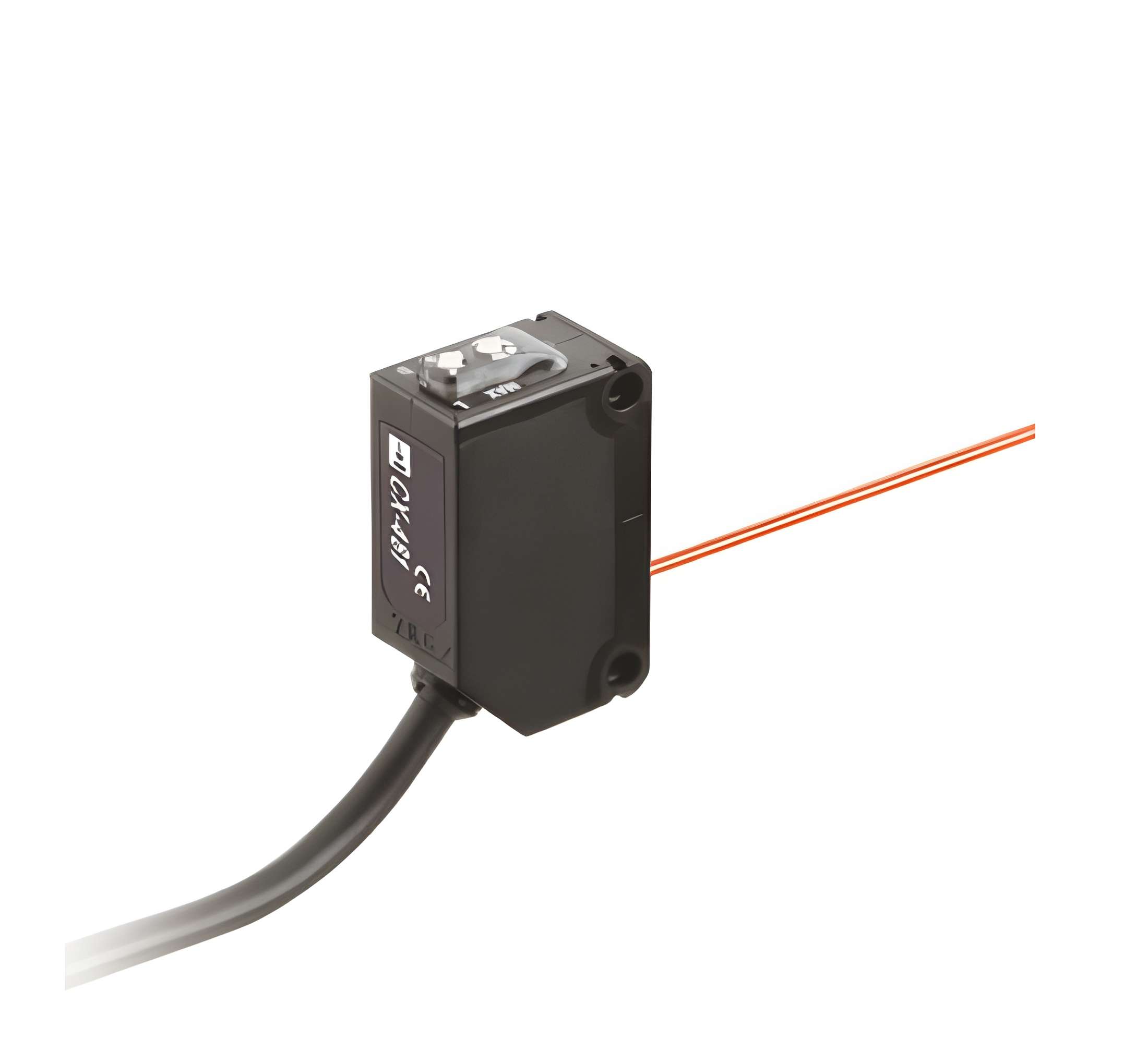Panasonic CX-482-J Sensor: Advanced Solution for Industrial Applications
The CX-482-J sensor is designed to meet the demanding requirements of modern industrial applications. Featuring advanced reflective technology and a robust build, this sensor delivers high precision and reliable performance. Whether for automation systems or heavy-duty operations, the CX-482-J sensor is an essential component for enhancing efficiency and accuracy.
Specifications of the Panasonic CX-482-J Sensor
The CX-482-J sensor is equipped with top-notch features to ensure optimal performance in industrial environments:
- Detection Range: Long-range sensing up to 2 meters with high accuracy.
- Reflective Technology: Advanced optical design for reliable object detection.
- Power Supply Requirements: Operates on 12-24V DC.
- Response Time: Quick detection with a response time of less than 1ms.
- Durability: Designed for harsh environments with IP67 protection.
- Connectivity: Multiple options for seamless integration into automation systems.
Industrial Applications of the Panasonic CX-482-J Sensor
The CX-482-J sensor is ideal for a variety of industrial applications:
- Automation Systems: Ensures precise object detection in automated assembly lines.
- Quality Control: Enhances inspection accuracy in manufacturing processes.
- Logistics: Optimizes material handling and inventory tracking.
- Heavy-Duty Environments: Performs reliably in challenging conditions, such as factories and warehouses.
- Robotics: Seamlessly integrates into robotic systems for enhanced functionality.
Why Choose the Panasonic CX-482-J Sensor?
The CX-482-J sensor offers several advantages, making it a preferred choice for industrial applications:
- High Performance: Delivers consistent and accurate detection even in demanding environments.
- Durability: Built to withstand harsh conditions, ensuring a long operational life.
- Ease of Installation: Quick and straightforward setup reduces downtime.
- Cost-Efficiency: Reduces maintenance needs, saving operational costs over time.
Installation Guide for the Panasonic CX-482-J Sensor
Installing the CX-482-J sensor is a simple process. Follow these steps for optimal performance:
- Preparation: Ensure the mounting surface is clean and stable.
- Positioning: Mount the sensor securely at the desired location.
- Wiring: Connect the sensor to the power supply and control system as per the datasheet instructions.
- Calibration: Adjust the sensitivity settings to suit your application.
- Testing: Verify the sensor’s performance before initiating full-scale operations.
Buying Guide for the Panasonic CX-482-J Sensor
When purchasing the CX-482-J sensor, consider the following factors to ensure the best fit for your needs:
- Application Requirements: Evaluate the detection range and sensitivity needed for your setup.
- Environment: Choose a sensor with the durability to withstand your operational conditions.
- Integration: Ensure compatibility with your existing systems and connectivity options.
- Supplier: Opt for reliable suppliers offering comprehensive support and warranty.
FAQs About the Panasonic CX-482-J Sensor
Here are some commonly asked questions about the CX-482-J sensor:
What is the maximum detection range of the CX-482-J sensor?
The CX-482-J sensor can detect objects up to 2 meters with high precision.
Is the CX-482-J sensor suitable for outdoor use?
Yes, the sensor is built with IP67 protection, making it suitable for outdoor and harsh environments.
What are the power supply requirements?
The CX-482-J sensor operates on a 12-24V DC power supply.
Can the CX-482-J sensor be integrated into robotic systems?
Yes, its connectivity options and advanced features make it ideal for robotic applications.
Conclusion
The CX-482-J sensor is a high-performance solution for industrial and automation applications. With its advanced features, durability, and ease of integration, it is an excellent investment for enhancing operational efficiency. Buy the CX-482-J sensor online today and take your industrial processes to the next level.
Related Articles: Learn more about the Photoelectric sensors by reading our blog on What is a Photoelectric Sensor?

